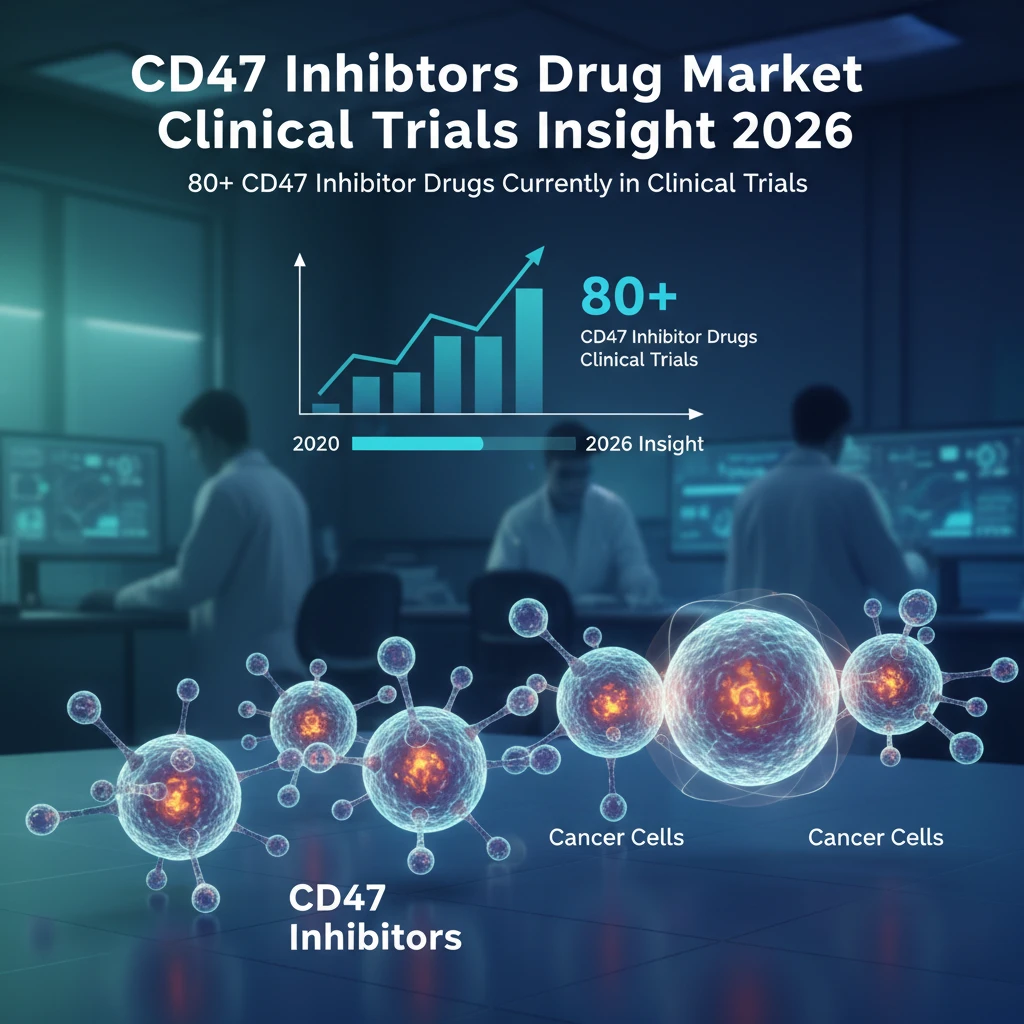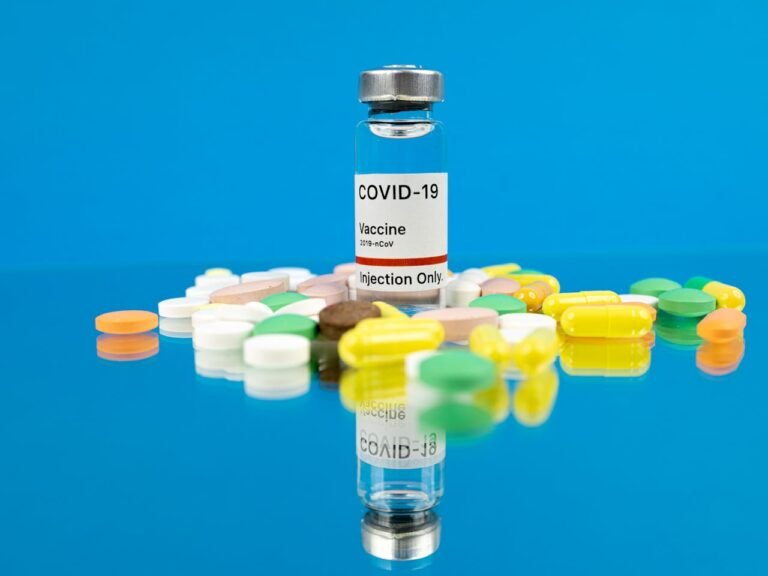The global oncology landscape continues to evolve at a rapid pace, driven by a growing understanding of tumor immunology and the mechanisms that cancer cells exploit to evade immune destruction. Among the most promising targets in this field is CD47, often referred to as the “don’t eat me” signal—a surface protein that helps cancer cells escape elimination by the body’s immune defenses.
The newly released report, “CD47 Inhibitors Drug Market Opportunity, Clinical Application by Indications & Clinical Trials Insight 2026,” now available from ResearchAndMarkets.com, provides a comprehensive examination of this emerging therapeutic class. The study delivers in-depth insights into the clinical, scientific, and commercial progress of CD47-targeted therapies, presenting a data-rich view of over 80 active clinical programs worldwide.
The Promise of CD47 Blockade in Cancer Therapy
In normal physiology, CD47 acts as a regulator that prevents macrophages—white blood cells responsible for clearing damaged or infected cells—from attacking healthy tissues. However, cancer cells frequently overexpress CD47, effectively cloaking themselves from immune detection. By inhibiting CD47, researchers aim to reawaken the body’s innate immune system, enabling macrophages and other immune cells to recognize and destroy malignant cells.
This strategy represents a new frontier in immuno-oncology, complementing established immune checkpoint inhibitors such as PD-1 and PD-L1 blockers. While these therapies have revolutionized cancer treatment, not all patients benefit from them, and many eventually develop resistance. CD47 inhibitors offer a promising alternative, potentially extending the reach of immunotherapy to previously unresponsive tumors.
Comprehensive Overview of the Global CD47 Therapeutic Landscape
The report provides a granular analysis of the global CD47 inhibitor market, detailing the wide variety of therapeutic modalities under investigation. These include:
- Monoclonal antibodies (mAbs): The most advanced and widely studied format targeting CD47 directly.
- Bispecific antibodies: Designed to improve tumor specificity and reduce toxicity by targeting CD47 in conjunction with a tumor-associated antigen.
- Antibody-drug conjugates (ADCs): Combining targeted antibodies with cytotoxic payloads for enhanced tumor killing.
- Nanobodies and small molecules: Next-generation formats that may overcome limitations of larger biologics and improve tissue penetration.
This diversity underscores the competitive intensity and innovation driving CD47-targeted drug development.
Report Highlights
Key takeaways from the Research and Markets report include:
- First CD47 inhibitor approval anticipated by 2028
- Over 80 CD47-targeted drugs currently in various stages of clinical testing
- Detailed insights by indication, company, country, and trial phase
- Global market trends and commercial opportunity assessments through 2026
- Regulatory designations such as Breakthrough Therapy, Fast Track, PRIME, and Orphan Drug status for select candidates
Clinical Development Insights: From Early Trials to Late-Stage Studies
At the heart of the report is an extensive review of ongoing clinical trials evaluating CD47-targeted therapies across both hematologic malignancies and solid tumors. The data spans Phase I to Phase III trials, offering detailed information about sponsors, geographical locations, study designs, and clinical endpoints.
Hematologic cancers, such as non-Hodgkin lymphoma (NHL) and acute myeloid leukemia (AML), were among the first diseases targeted by CD47 inhibitors, given the strong preclinical rationale and high unmet medical need. Encouraging early results have since prompted expansion into solid tumors—including lung, colorectal, breast, ovarian, and head & neck cancers—demonstrating the platform’s versatility.
The report also emphasizes the growing momentum in combination strategies, reflecting the belief that CD47 inhibition works best in synergy with other treatment modalities. Current research includes trials combining CD47 inhibitors with PD-1/PD-L1 checkpoint inhibitors, chemotherapy, and targeted therapies, aiming to achieve deeper and more durable responses.
Clinical endpoints under scrutiny include overall survival (OS), progression-free survival (PFS), and objective response rate (ORR), as well as safety metrics. Notably, CD47 inhibitors can induce on-target hematologic toxicities, such as anemia and thrombocytopenia, necessitating careful dose optimization and safety monitoring.
Leading Companies in CD47 Research and Development
The CD47 therapeutic field is a hotbed of innovation led by both established pharmaceutical players and agile biotechnology firms. Major contributors include:
- Gilead Sciences – Developing magrolimab, one of the most advanced CD47 inhibitors in clinical testing.
- ALX Oncology – Focused on evorpacept, a next-generation fusion protein designed to minimize toxicity while maintaining efficacy.
- I-Mab Biopharma – Advancing lemzoparlimab and exploring partnerships to expand its global clinical footprint.
- Akeso Biopharma, Phanes Therapeutics, and Liminatus Pharma – Each pursuing unique bispecific or engineered antibody approaches.
These companies are leveraging proprietary technologies, such as engineered Fc regions and selective binding mechanisms, to differentiate their candidates. Many are also pursuing strategic collaborations and licensing deals to accelerate clinical progress and expand their global reach.
By mapping the competitive landscape, the report provides stakeholders—from investors to academic researchers—with valuable intelligence on which players are most likely to shape the future of CD47-targeted therapy.
Emerging Trends and Future Directions
The future of CD47-targeted therapy will be defined by several key trends and innovations:
- Enhanced Safety and Specificity:
Developers are engineering next-generation antibodies and bispecifics to reduce off-target effects, particularly hematologic toxicities. Improved selectivity could enable higher dosing and stronger anti-tumor responses. - Bispecific and Multifunctional Constructs:
Future drug designs are expected to combine CD47 inhibition with tumor antigen targeting, such as CD19 or HER2, increasing tumor selectivity while minimizing damage to healthy cells. - Biomarker-Guided Patient Selection:
Personalized treatment approaches using biomarkers of CD47 expression or tumor immune microenvironment profiling are likely to improve patient outcomes and optimize clinical trial designs. - Expansion into Solid Tumors:
While early development has focused on blood cancers, success in solid tumors will represent a significant growth frontier, potentially multiplying the market size over the next decade. - Advanced Drug Delivery Systems:
Nanotechnology, gene editing, and vector-based delivery may further enhance the precision and durability of CD47 inhibition, paving the way for longer-term remissions or even cures. - Combination Immunotherapy Paradigms:
The integration of CD47 blockade with PD-1/PD-L1 inhibitors, CAR-T cell therapy, and conventional chemotherapeutics is expected to become a cornerstone of future cancer treatment regimens.
Global Market Outlook Through 2026
The global CD47 inhibitor drug market is poised for significant expansion, supported by increasing clinical validation, regulatory engagement, and investor interest. With more than 80 drugs in active development and several approaching pivotal trials, analysts anticipate substantial market growth by 2026, potentially leading to the first commercial approvals by 2028.
The report further segments market dynamics by region, highlighting strong R&D activity in China, the United States, South Korea, Australia, and Canada. China, in particular, has emerged as a major hub for CD47 drug development, driven by a robust biotech ecosystem and supportive regulatory pathways.
Challenges and Restraints
Despite the optimism, the CD47 field faces challenges that must be carefully managed. Safety concerns, particularly those related to red blood cell clearance, remain a critical focus. In addition, manufacturing complexities, high development costs, and the crowded competitive landscape may slow the pace of commercialization.
Nevertheless, these challenges are being addressed through innovative trial designs, adaptive dosing regimens, and novel molecular engineering techniques, positioning CD47-targeted therapy as one of the most closely watched areas in oncology innovation.
Conclusion
The CD47 inhibitor market represents one of the most dynamic and rapidly advancing frontiers in cancer immunotherapy. With over 80 drugs in development, a diverse array of therapeutic platforms, and accelerating clinical momentum, the field stands on the brink of transformative breakthroughs.
By targeting the “don’t eat me” signal that allows tumors to hide from immune attack, CD47 blockade offers a powerful new mechanism to complement existing treatments and potentially redefine how cancers are managed.
The ResearchAndMarkets.com report serves as a definitive guide to this evolving space, providing stakeholders with actionable insights into clinical progress, market opportunities, competitive positioning, and future trends leading up to 2026—and beyond.



